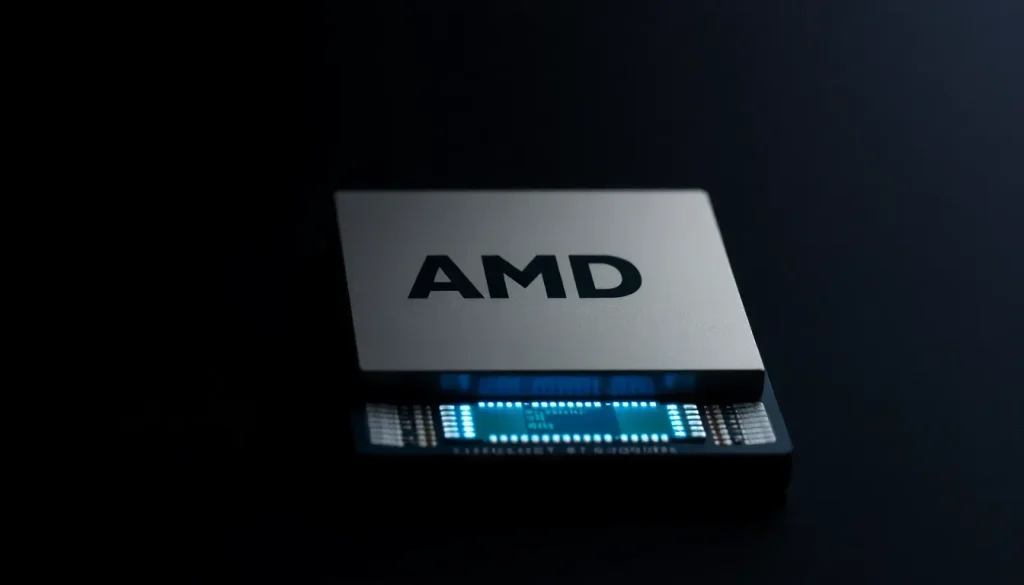AMD may produce chips at Intel foundries in the future

The semiconductor industry is witnessing a paradigm shift, and the potential collaboration between AMD and Intel could redefine competitive dynamics in this crucial sector. As technology continues to advance, the need for high-performance chips is more pressing than ever. The implications of such a partnership extend beyond mere business transactions, touching on geopolitical and technological ramifications that could shape the future of computing.
In a surprising turn of events, reports have emerged indicating that Intel is in preliminary discussions with AMD to manufacture some of its chips. This shift signifies a potential departure from AMD's longstanding reliance on TSMC (Taiwan Semiconductor Manufacturing Company) for silicon production. If completed, this collaboration could not only bolster Intel's foundry business but also reflect AMD's growing confidence in its rival's capabilities.
Intel's Strategic Move Towards Foundry Services
Intel has long been a giant in the semiconductor landscape, but its recent focus on expanding its foundry services is a strategic pivot in response to intense competition. The company aims to become a significant player in the foundry market, which has been dominated by TSMC. This effort is crucial as demand for advanced semiconductor manufacturing continues to soar globally.
According to Semafor, insiders suggest that AMD may begin to utilize Intel's manufacturing facilities for some of its chip production. While details about the volume of chips that AMD would produce at Intel remain unclear, any new business would provide a much-needed boost to Intel, especially amid its ongoing financial challenges.
- Intel's shares rose approximately 7% following the news, signaling investor optimism.
- The company's stock has seen a remarkable year-over-year increase of 77%.
- Intel's foundry expansion is supported by significant investments, including a 9.9% stake from the US government and substantial purchases by SoftBank and Nvidia.
The Historical Context of AMD and Intel Collaboration
While AMD and Intel have often been seen as fierce competitors, their history of collaboration offers a unique perspective. One of the most notable partnerships occurred in 2018 with the Kaby Lake-G lineup, which combined an Intel CPU with an AMD Vega GPU. This collaboration highlighted the potential benefits of joint ventures in a rapidly evolving technology landscape.
As pressure mounts in the semiconductor market, both companies may find that collaboration is more beneficial than competition. The current discussions could pave the way for AMD to leverage Intel's manufacturing prowess while Intel benefits from AMD's advanced chip designs.
Benefits of Diversifying Semiconductor Manufacturing
For AMD, diversifying its manufacturing sources is a strategic move that can mitigate risks associated with depending solely on TSMC. This diversification comes with several advantages:
- **Risk Mitigation**: Relying on a single manufacturer can be risky, especially during geopolitical tensions, as seen in recent years with Taiwan's political status.
- **Cost Efficiency**: By utilizing multiple foundries, AMD can negotiate better pricing and terms, potentially reducing production costs.
- **Supply Chain Resilience**: A diversified supply chain can enhance AMD's ability to respond to fluctuations in demand or disruptions in production.
Technical Considerations for Collaboration
Despite the potential benefits, successful collaboration hinges on technical compatibility. Intel's manufacturing processes must meet or exceed the capabilities of TSMC for AMD to consider outsourcing any production. Currently, Intel is working on its advanced nodes, particularly the 18A and 14A processes, which are seen as critical for producing high-performance chips.
However, AMD is unlikely to compromise on the technology it uses for its flagship products. For Intel to secure AMD's business, it must demonstrate that it can deliver chips with comparable performance and efficiency to those produced by TSMC.
Geopolitical Implications of US-based Manufacturing
Choosing a US-based manufacturer like Intel also carries significant geopolitical implications. As tensions rise between the US and China, many companies are reevaluating their supply chains to minimize risk. Manufacturing domestically not only aligns with governmental interests but also helps avoid potential tariffs that could arise from international trade disputes.
By aligning with Intel, AMD could strengthen its position in the eyes of US policymakers. This relationship could foster a favorable environment for AMD, especially as the government continues to emphasize the importance of domestic semiconductor production.
Market Reactions and Future Outlook
The semiconductor market is highly dynamic, and the reactions from investors and consumers can significantly influence the trajectory of companies involved. Following the announcement of discussions between AMD and Intel, market responses indicate a growing optimism about Intel's revitalization efforts.
As more tech giants gravitate toward Intel, it’s essential to monitor how this potential partnership could evolve. The collaboration could mark a turning point for both companies, reshaping their competitive landscapes and influencing the broader semiconductor industry.
In conclusion, the collaboration between AMD and Intel represents more than just a business arrangement; it embodies a shift in strategy that could redefine the semiconductor industry. As both companies navigate this complex landscape, their decisions will have far-reaching implications for technology development, market dynamics, and geopolitical considerations.
For further insights on the semiconductor industry and its evolving landscape, you might find this video relevant:




Leave a Reply